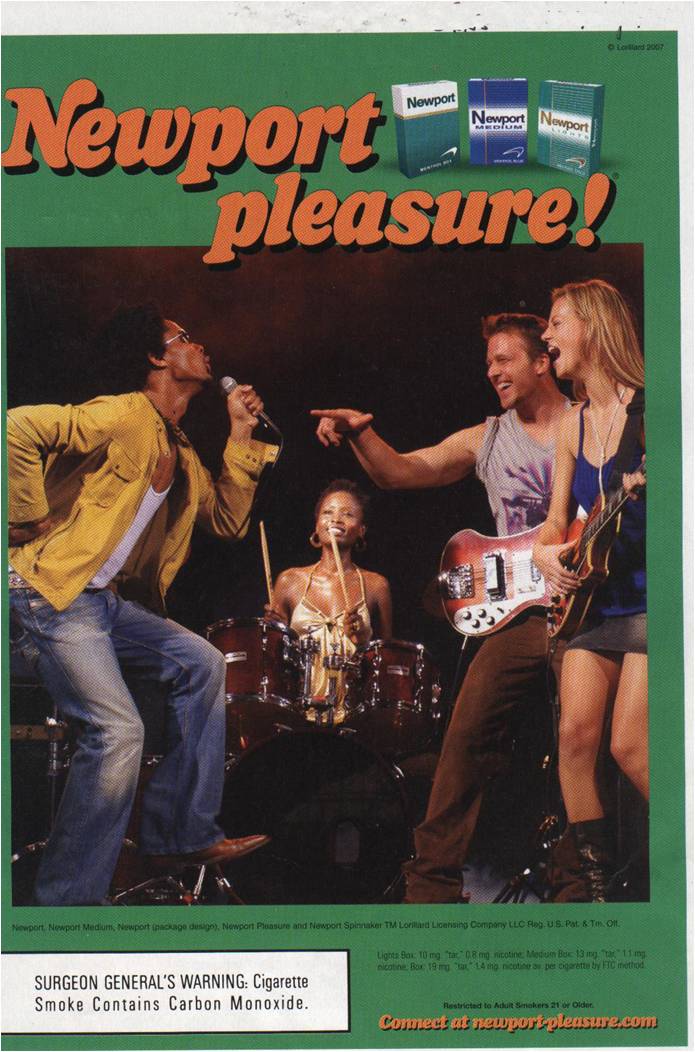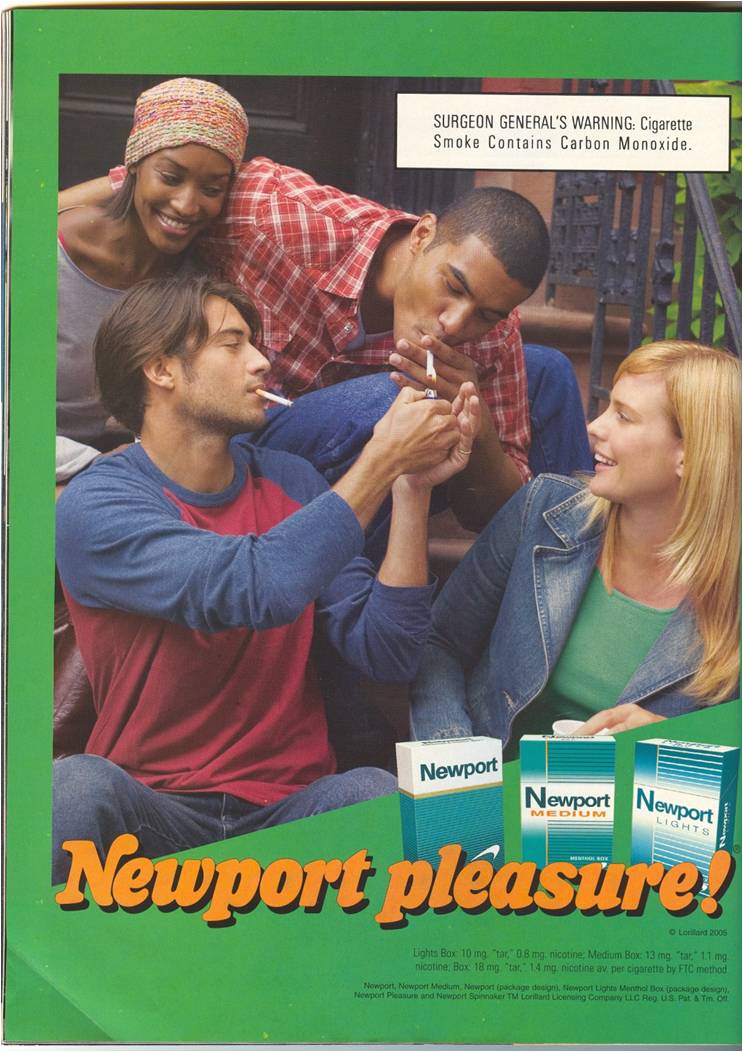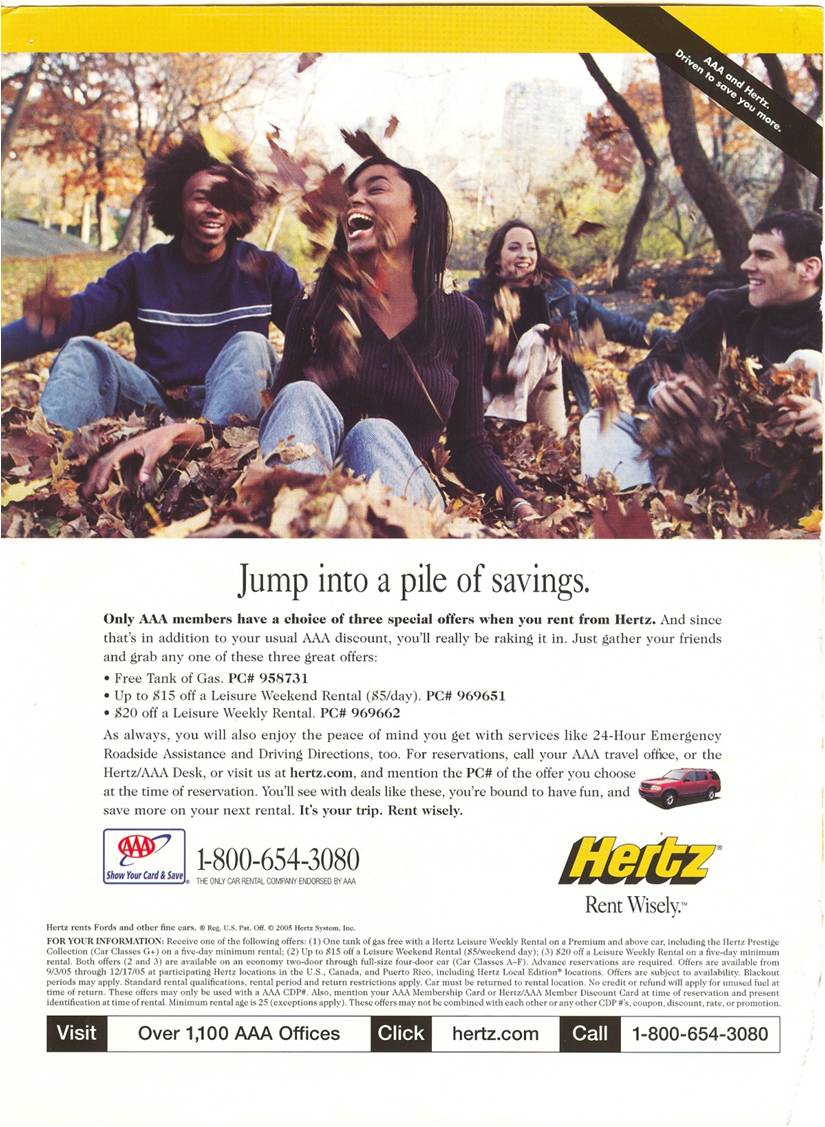In this series I have offered five explanations of why people of color are included in advertising. Start with the first in the series and follow the links to the remaining four here.
I am now discussing how they are included. Already I have shown that people of color are often whitewashed, that they tend to be chaperoned by white people, and that they are often subordinated through placement and action.
In this ninth installment, I illustrate how, while interracial friendships are frequently pictured, interracial relationships are very rarely pictured. Look closely, who is (hooking up) with who?
Also in this series:
(1) Including people of color so as to associate the product with the racial stereotype.
(2) Including people of color to invoke (literally) the idea of “color” or “flavor.”
(3) To suggest ideas like “hipness,” “modernity,” and “progress.”
(4) To trigger the idea of human diversity.
(5) To suggest that the company cares about diversity.
How are they included?
(6) They are “white-washed.”
(7) They are “chaperoned.”
(8) They are subordinated through placement or action.





Comments 17
Sidewriter — January 13, 2009
I see your point, but I have to say that in the Pepsi ad, it looks to me like the two women are hooking up.
ms liberty — January 13, 2009
"Who's hooking up with whom?" Well, in #3, I think the women are the ones hooking up with each other. Look at those eyes :)
qrhe — January 13, 2009
I've found the taboo on interracial relationships to be a very American phenomenon. In movies, see Love Actually for a British movie about romance that incorporates interracial relationships very nonchalantly. Admittedly, neither of the two instances of interracial relationships is developed upon, but they are present.
And I totally agree about the Pepsi ad. The women are hooking up with each other. The guy is trying to score with the Pepsi can.
oliviacw — January 13, 2009
I was surprised to see the dates on the Newport ads (copyright 2007 and 2005). They feel much more retro to me, maybe early to mid 1980s.
Also, the text in the Diet Pepsi ad does reinforces the impression that the two women may have something going on, interestingly ("chances she's giving him her real number: 0%").
Andy — January 13, 2009
There seemed to be a barrage of television ads a while ago that featured a black guy and a white guy, and the black guy's job was always to look at the white guy like he was stupid while the white guy actually did something stupid. I wish I could find a link to some examples. They were always for different products, so it wasn't just a single company's advertising scheme. I think one was a WaMu, similar to the ones with the old white bank owner guys. I think another was for lawn equipment.
Will — January 13, 2009
The first ad appears to contradict the previous installment in this series in that the African-American guy is the focus of the ad. Of course, he's imitating Mick Jagger who got famous imitating black people, so who knows.
Obviously not directly relevant, but I find it interesting that in the second Newport ad only the men are smoking. A quick Google search found only Newport ads like the first one, where no one is actually smoking in the picture.
OP Minded — January 13, 2009
"the taboo on interracial relationships to be a very American phenomenon."
Oh, brother.... First, there is no taboo. Second, it is in no way uniquely American.
Titanis walleri — January 13, 2009
"I see your point, but I have to say that in the Pepsi ad, it looks to me like the two women are hooking up."
I'm glad I'm not the only one seeing that.
Bagelsan — January 14, 2009
First, there is no taboo. Second, it is in no way uniquely American.
Well, there ya have it! The thing that does not exist is *definitely* not uniquely American... 9.9
I agree that the two women are providing all the chemistry in the ad, but it's true that the white guy is trying to hit on the *white* woman. I find it hard to imagine an ad where a white guy is trying to get a number from a WoC while ignoring a white woman.
Ben Ostrowsky — January 17, 2009
@bagelsan:
I find it VERY easy to imagine an ad where a white guy is trying to get a number from a woman of color while ignoring a white woman. The product being sold would be premium chocolate ice cream, perhaps, or (with several women of color with a range of skin tones) a gadget that comes in a range of colors, not just the iconic white of an Apple product. The tagline would be something like "Tonight, try something more interesting than vanilla" or "It's okay to prefer something other than white".
Thank heavens I'm far from the madding avenue. ;)
i never thought i’d say this… « Cultural Calories — February 4, 2009
[...] couples are neglected by the media (minus Seal and Heidi Klum) by reading a series of posts titled “How and why people of color are included in advertising” on the Sociological Images blog. It’s really got me thinking and in a perpetual state of [...]
Sociological Images » HOW AND WHY PEOPLE OF COLOR ARE INCLUDED IN ADVERTISING: 8TH IN A SERIES — April 15, 2009
[...] Next up: Interracial dating, the last taboo. [...]
karinova — April 17, 2010
I think the overall point still stands, but it's perhaps worth noting that ads for the Newport brand of cigarettes are not aimed primarily at white people.
Since I saw this well-known fact getting challenged on other posts in the series, I submit references:
Per a 2003 TRDRP report [PDF]:
"Today, over 70% of African American smokers prefer menthol cigarettes, compared with 30% of White smokers. This unique social phenomenon was principally occasioned by the tobacco industry’s masterful manipulation of the burgeoning Black, urban, segregated, consumer market in the 1960s. Through the use of television and other advertising media, coupled with culturally tailored images and messages, the tobacco industry "African-Americanized" menthol cigarettes."
The Surgeon General's 1998 report on tobacco use among US minorities noted:
"Certain tobacco products are advertised disproportionately to members of racial/ethnic groups. For example, menthol cigarettes are more frequently advertised in magazines targeting African Americans than in magazines directed at the general public. An analysis of one year of issues of three magazines primarily directed at African Americans— Jet, Ebony, and Essence— and of four magazines directed at the general population— Newsweek, Time, People, and Mademoiselle— found that 12% more advertisements for cigarettes appeared in the African American magazines. In addition, 65.9% of the cigarette advertisements in the African American magazines were for menthol cigarettes, compared with 15.4% of those in the general population magazines. Indeed, Newport, a menthol brand, is the number one preferred cigarette among African American adults and youth (CDC 1990b, 1994a)."
[Great series, by the way. Too bad so few people seemed to understand it!]
Grisel — April 21, 2010
I just saw this series and I absolutely love it. Thank you for posting such great work! I'd like to see something done on how Black models are used in the fashion industry, or how their use has evolved. It seems like skin color trends happen (very dark Black women with short hair are used more often in high fashion, lighter-skinned Black women are used for swim/underwear work) - maybe I'm totally wrong but I'd like to see what you think. Just a thought. Thanks for the work!
Grisel Y. Acosta
Doctoral candidate
University of Texas at San Antonio
hadleyscott — May 8, 2025
Thank you for your useful post. I have already bookmarked the webpage for future updates. brushed dc motor